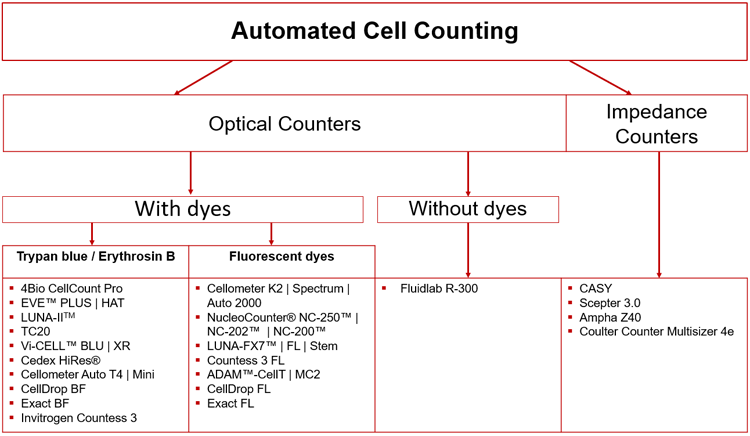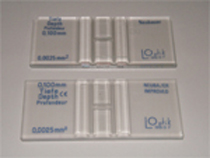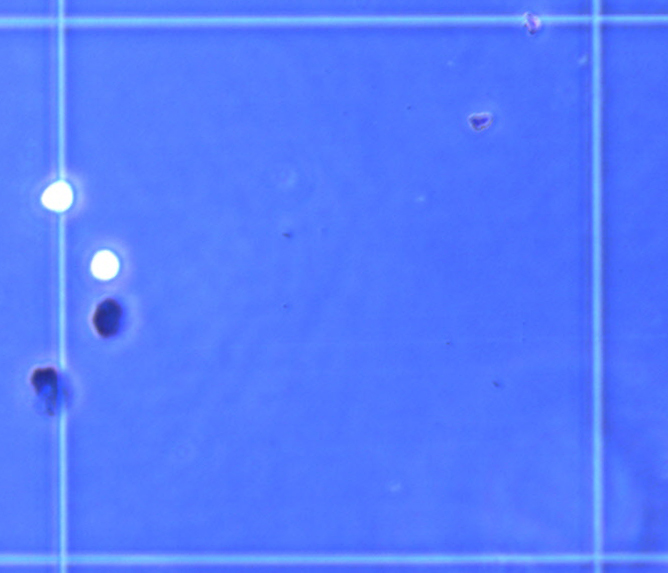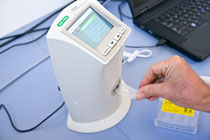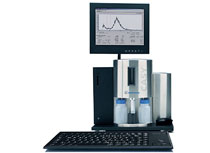Overview: Manual Cell Counting and Automated Cell Counters
To count or not to count? Often, that's the question. However, you should realize that counting cells is a necessary and potent measure to culture stock and experimental cell cultures in a standardized and reproducible fashion. Counting may give you much more insight than just the number of cells. Setting up a growth curve and just adding your values on a weekly basis may make your understanding of what is going on in the dish - e.g. before an experiment fails - a crucial asset to save time, money and frustration. Besides the classical manual couting using a hemocytometer (e.g. Neubauer chamber), there are now several automated systems available.
Comparison of cell counting systems
| Cell Counting Systems | Advantages | Disadvantages |
| 1. Optical based cell counting
1.1. Manual cell counting with chamber
|
|
|
|
1.2. Automated cell counting with and without chamber
|
|
|
|
2. Impedance based cell counting (Type: Coulter Counter)
|
|
|
Manual Cell Counting in a Hemocytometer
Manual counting in a hemocytometer is the cheapest variant of cell counting. There are several types of counting chambers depending on the intended use. In cell culture, most often the Neubauer improved or Thoma chambers are used. Chambers may be purchased from different distributers. A good overview over the counting patterns is given here: Hecht Labor
However, this type of cell counting is most difficult to standardize. Specifically, results can vary greatly for different users as the counting is based on subjective decisions (inside/outside, dead/alive, cell/debris). This leads to variable results and poor reproducibility. Manual cell counting is also one of the most labor-intensive and expensive methods.
Automated Counting
A large array of counters is available at the moment. The types range from counter "only" to more sophisticated machines that may perform additional functions. Below, you can see a comparison of machines divided into measurement types including the counters ViCell, Luna, Casy, Cedex, 4BioCell, EVE, TC20, Cellometer, CellDrop, Luna, Countess, Exact FL Fluidlab, Adam, Nucleocounter, Ampha and Scepter. Please note, that we have decided not to include cell monitoring systems.
